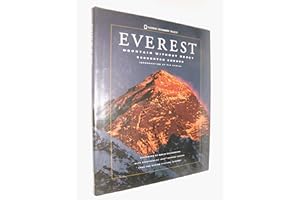One Sentence Summary:
The book ‘Everest: Mountain Without Mercy’ by Broughton Coburn is a gripping and captivating account of the 1996 Everest disaster, highlighting the immense physical and emotional challenges faced by mountaineers attempting to reach the world’s highest peak.
Book Genre:
Non-fiction, adventure, mountaineering
Main Topic of the Book:
The main topic of the book is the disastrous 1996 Everest expedition, which led to the death of eight climbers and became one of the deadliest climbing seasons in the mountain’s history.
Key Ideas:
- The unpredictability and danger of Mount Everest, and the immense physical and psychological stamina required to climb it.
- The commercialization and exploitation of Everest, with guided expeditions and inexperienced climbers attempting to conquer the mountain.
- The impact of culture and tradition on the Sherpas and their role in Everest expeditions.
- The bond and camaraderie between mountaineers, as well as the devastating loss and grief felt when faced with the death of a fellow climber.
Main Parts of the Book and Short Summary:
- Part One: Everest: Mountain Without Mercy – Sets the scene and introduces readers to the history and allure of Mount Everest, as well as the commercialization of climbing expeditions.
- Part Two: Shadow of the Almighty – Focuses on the personal stories and motivations of the climbers attempting to summit Everest, including an up-close look at the personalities and backgrounds of accomplished mountaineers like Scott Fischer and Rob Hall.
- Part Three: The Monsoon Strikes – Details the events of the disastrous 1996 expedition, including the physical and emotional struggles faced by the climbers, technical difficulties encountered, and the impact of the sudden appearance of a fierce storm.
- Part Four: High Camps – Explores the aftermath of the disaster and the efforts to rescue stranded climbers, as well as the struggle to come to terms with the loss of friends and fellow climbers.
- Part Five: Jumping Beyond the Limits – Examines the impact of the 1996 disaster on the climbing world, as well as the media frenzy and controversies that ensued.
- Part Six: The Truth Behind the Myth – Concludes with a reflection on the lessons learned from the 1996 Everest disaster and the enduring mystery and fascination surrounding the world’s highest peak.
Key Takeaways:
- Mount Everest is a formidable and unpredictable mountain that has claimed the lives of many climbers.
- The commercialization of Everest has led to overcrowding and inexperienced climbers attempting to conquer the mountain, increasing the risk of disaster.
- The Sherpas play a vital role in Everest expeditions, often taking on high-risk tasks for the benefit of their clients, and their culture and traditions greatly influence the dynamics of the mountain.
- The bond and camaraderie between climbers is strong, but the loss of a fellow climber can have a devastating impact.
- The 1996 Everest disaster was a wake-up call for the climbing community, highlighting the dangers and consequences of pushing beyond the limits.
Author’s Background and Qualifications:
Broughton Coburn is an American writer and mountaineer who has been fascinated by the Himalayas since he was a young boy. He has written several books on the region, including ‘Everest: Mountain Without Mercy’ and ‘Confluences: Places Where Rivers Meet’. He has also worked as a journalist and speaker, and has personally climbed in the Himalayas, bringing a wealth of first-hand knowledge and experience to his writing.
Target Audience:
The book is targeted towards adults, particularly those interested in mountaineering, adventure, and the Everest region. It may also appeal to readers interested in personal stories and the human aspect of extreme challenges.
Publisher and First Publication Date:
Published by National Geographic and first released in 1997, ‘Everest: Mountain Without Mercy’ has since been republished and has become a popular and enduring account of the 1996 Everest disaster.

